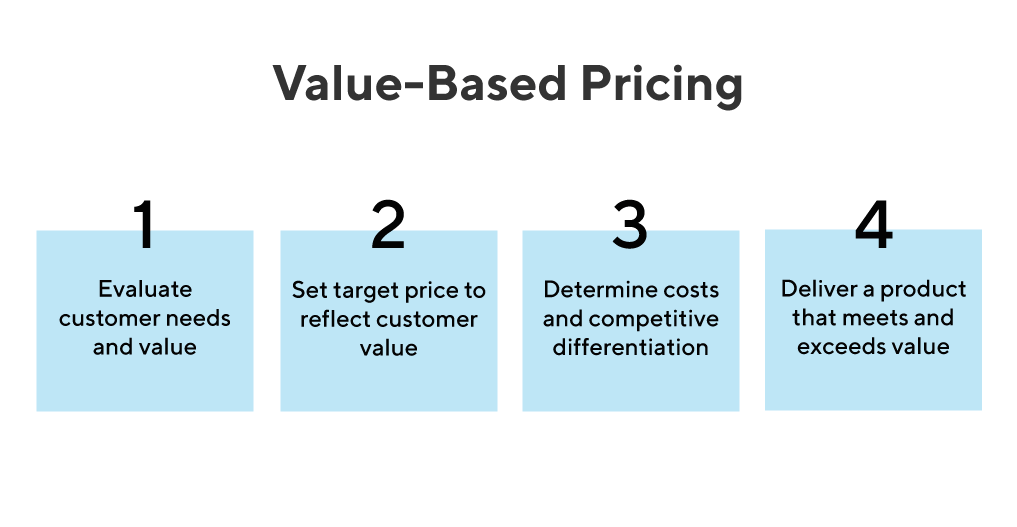How to price a product is one of the most challenging and complex tasks a product manager faces. Of course, there are obvious concerns, such as pricing goods too high and turning off buyers. But then, psychological factors also come into play. For example, people tend to place more value on a higher-priced product.
For B2B products, pricing becomes even more complex. B2B product teams must take into account the budgets of their customers’ organizations or departments. And for B2B SaaS products, in particular, pricing strategy gets even more complicated because there are so many pricing options. Will you opt for user-based pricing or pricing by seat (which coworkers in the company can share)? Subscription billing or month-to-month? A single pricing level or a tiered model offering different levels of service? And which of the main pricing strategies will you apply to whichever pricing model you choose?
The list of choices goes on and on. There is no one-size-fits-all pricing approach for SaaS products. However, your team will need to review the many pricing models available to SaaS companies, select one (or several), and begin testing.
This post will answer the question: How should you price your SaaS product? We’ll also outline a process to help your team find the ideal prices for your products.
A Step-by-Step Guide on How to Price Products
Step 1: Choose the right pricing strategy.
There are three main pricing strategies: cost-based pricing, competitive pricing, and pricing based on customer value. Let’s briefly review each.
With cost-based pricing, a business figures out its total cost to build, distribute, market, and support the product. Then the company sets a price that allows it to earn a profit over this total cost.
But as the business intelligence platform Price Intelligently points out, the cost-based pricing strategy has drawbacks. One problem is that you might not know all of your costs, or your fees might change over time. This problem means your company could price your products too low and lose money instead of profiting even on a product that sells well. Another flaw in this strategy is that your company’s costs don’t matter to your customers. They care only about how much value the product will deliver to them.
The competitive pricing strategy also has drawbacks. Pricing your SaaS products based on your competitors’ pricing will often lead to a race to the bottom. Plus, if you’re priced similarly to competitive products on the market, your customers might conclude that these SaaS solutions are all more or less the same—even if your solution offers important benefits that the others don’t.
The third approach is setting your prices based on how much value your product will deliver to customers. This approach is the ideal strategy for several reasons.
If you can make the case that your product will deliver significant benefits, then you can charge a higher price, and customers will pay for it.

Example scenarios:
Jim Semick, who co-founded ProductPlan, has written in-depth about this for Pragmatic Marketing. Here’s how Jim described using customer-value-based pricing when he was part of the founding team that launched the conferencing app GoToMeeting:
“When we were determining to price for GoToMeeting, we interviewed dozens of potential customers to gain a deep understanding of the value they might receive from conducting online meetings with our solution. We discovered:
- Lifestyle benefits from conducting meetings remotely
- Cost and time savings from reduced or eliminated travel
- Reduced frustration by not using complicated solutions
- Cost savings from switching to our solution versus expensive per-minute pricing of existing solutions
We developed GoToMeeting’s unique $49 “All You Can Meet” flat-rate pricing (an industry-leading innovation at the time). Because the product was SaaS, we had the flexibility to price our product differently from the competition and create a unique product in the market. In a sense, we made pricing a part of the product. It became a differentiating feature that marketing promoted heavily.”
Another example scenario
Another example: Marketing author Bob Bly uses the 10x strategy in pricing his books and other information products according to customer value. He argues that your products should provide yours with 10x the value of its price.
If Bly releases an eBook about becoming a better public speaker, he will describe the return on investment to the customer using the value-based strategy. Let’s assume the book costs $20. Bly will explain that if the reader can apply even a few of the book’s tips to become a more effective public speaker, this could lead to more speaking opportunities. Just one possibility will be worth many times the book’s price. If the reader uses a tip or two to become more persuasive in meetings at work, the benefits to that person’s career will be worth far more than $20.
Bottom line: The best SaaS pricing strategy is value-based pricing.
Step 2: Quantify your buyer personas.
The buyers of B2B SaaS products are often not the same people as the end-users of those products. Instead, they are managers, heads of departments, and company executives.
Your next step in deciding how to price your products will be to learn who these people are and how best to approach them. Price Intelligently offers this advice for quantifying your buyer personas:
- Conceptualize your most important personas. Next, build unique personas for the three or five types of B2B buyers you want to target. These will vary by job title, company size, industry, and the specific functionality in your product that each persona will care about most.
- Determine what data you’ll need about each persona. You’ll want to learn, for example, about each persona’s price sensitivity, budget, and willingness to pay. You’ll also want to find out which features will have the most appeal to these personas and which types of value messages will resonate with them.
- Collect the data. You will use surveys and one-on-one interviews with each of the buyer personas you’ve identified.
- Analyze the data. In this stage, you’ll segment and study the answers you’ve gathered from your survey respondents and interview subjects. Your analysis should lead you to conclusions about how much your personas value your product and how much they’ll be willing to pay for it.
- Target the high-value personas. Finally, you will take these learnings and arm your sales and marketing teams with the information they need to pursue the buyer personas most likely to become customers.
Step 3: Calculate the average customer’s lifetime value (LTV)
The lifetime value (LTV) is the total revenue a customer will add to your product’s bottom line, minus the total costs of acquiring and keeping that customer.
For example, Jim Semick discusses this scenario in his Pragmatic article:
“If you license your software at $25 per month, spend $5 a month delivering and supporting the service, and keep an average customer for 18 months, your rough LTV is: (25-5)*18 = $360.”
As products and companies mature, their overall costs stabilize, and those companies can begin enjoying the economies of scale. When this happens, a product team can enjoy revenue streams that increase relative to their costs—resulting in a higher average customer lifetime value. But as Jim points out, your cost-to-revenue ratio could be higher during your product’s early years.
Understanding your customer LTV will help you price your products more accurately and strategically.
Step 4: Choose a pricing model.
SaaS companies price their products using a wide range of models, so you will have many options to review. Here are several SaaS pricing models, along with examples of real SaaS businesses that use them:
- Per-user (many SaaS products)
- Per-user with free participants (GoToMeeting, ProductPlan)
- Storage (Dropbox)
- Features (plans based on feature tiers)
- Project (Basecamp)
- Freemium (LinkedIn)
- Per item/contact (AppFolio, Hubspot)
- Per Node/Server (Hadoop)
- Processor time/Data transferred (Amazon Web Services)
- Per Visitor/Traffic (AdRoll)
- Open Source (free with paid services)
- Advertising (Facebook)
- Broker fee (AirBnB)
When selecting your preferred pricing model, you will want to choose a model that aligns with your customer’s goals and ability to pay. If possible, you should also use a pricing model that allows you to stand out from your competition. Jim and his team at GoToMeeting did this, for example, with their “All You Can Meet for $49” flat monthly rate.
Step 5: Experiment and learn
At this point, you’ve identified value-based pricing as your strategy. You’ve developed a picture of your most valuable buyer personas, built an estimate of customer lifetime value, and chosen a specific model for your pricing.
Now it’s time to test those details in the market. Today you have many tools and approaches available to make it easy and affordable to learn the ideal price for you and your customers. For example,
- A/B split tests. This approach involves segmenting your ad or landing page to different audiences and changing only the price.
- Offering tiered pricing with different levels of service. This strategy employs price anchoring, a powerful psychological tool that influences a buyer’s perception of one price based on the availability of a similar product at a different rate. If you offer a standard and premium version at various price points, for example, buyers are more likely to perceive the standard price as reasonable because the premium is far higher.
- Free, limited-time trial period to use your SaaS solution. One of the most powerful aspects of this approach is that it removes the friction that buyers always experience when asked to pay even a small amount.
Conclusion
Pricing a SaaS product is complicated and requires a lot of thinking, planning, and research. But if you follow the steps we’ve outlined above, your team will be well on its way to finding the ideal price points for your products.



